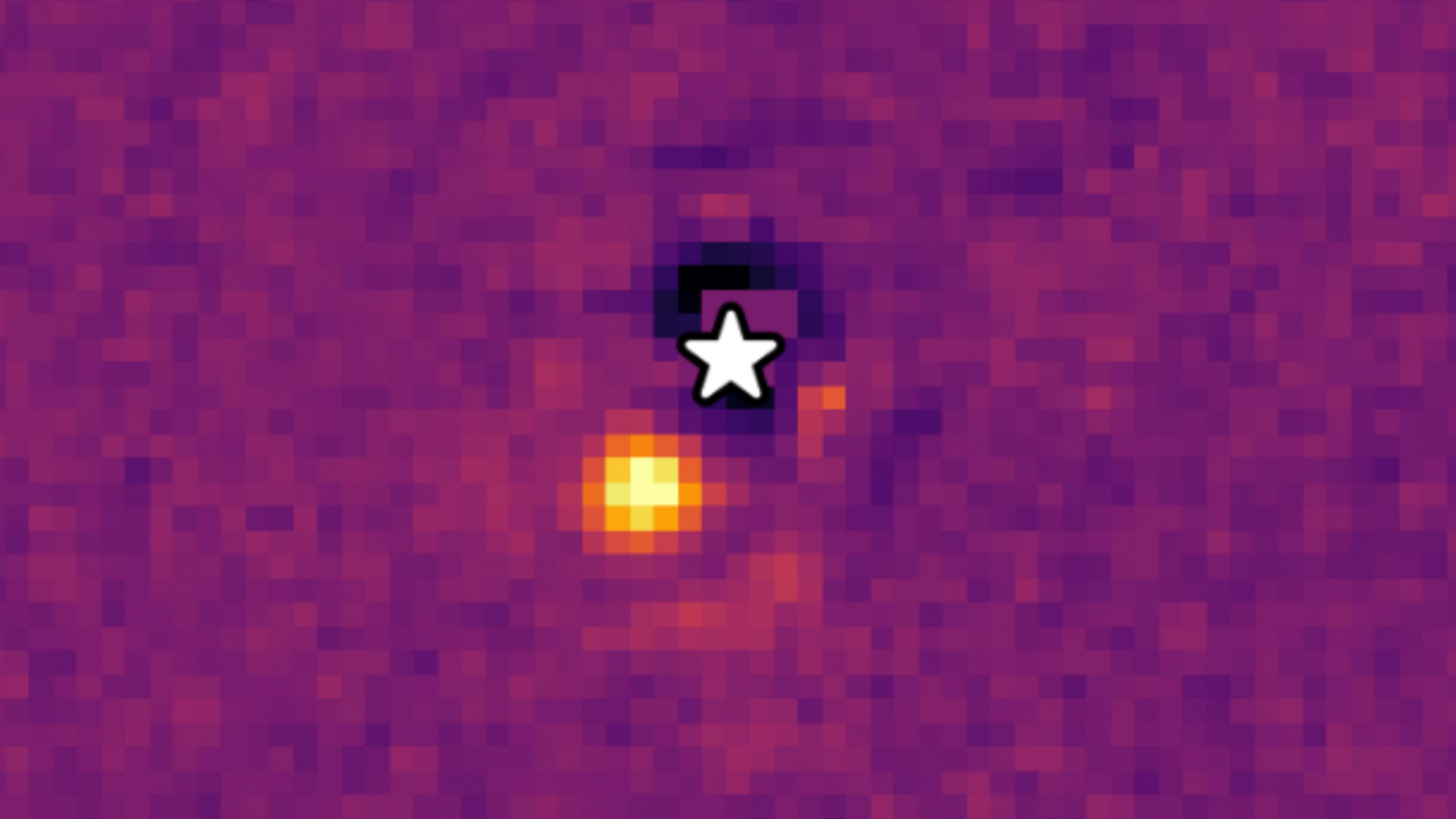
by Jonathan O'Callaghan, Contributing Writer
September 1, 2022
Astronomers have revealed the first photograph of an exoplanet taken by NASA’s James Webb Space Telescope (JWST). The image shows the bright blob of a world seven times heavier than Jupiter that orbits a star nearly 400 light-years away. The groundbreaking result is the latest in a slew of early exoplanet findings from the telescope, and a test of technologies that will enable direct imaging of Earth-like planets by future space telescopes.
“It’s exhilarating,” said Aarynn Carter, an astronomer at the University of California, Santa Cruz, and part of the team that processed the image. “The result is, honestly, excellent.”
JWST, a telescope decades in the making that launched in December 2021 and now floats a million miles from Earth, became fully operational this summer. Already, it has observed distant galaxies at the dawn of the universe and taken exquisite views of Jupiter, among other early results. Astronomers say the telescope is also performing 10 times better than expected at observing exoplanets.
Abstractions navigates promising ideas in science and mathematics. Journey with us and join the conversation.
See all Abstractions blog
The new image, described in an accompanying paper posted online last night, comes from a team led by the astrophysicist Sasha Hinkley at the University of Exeter in the United Kingdom. The researchers pointed JWST at the fast-spinning star HIP 65426, where a planet was already known to exist; the SPHERE instrument on the Very Large Telescope in Chile first photographed the planet in 2017. Hinkley’s team sought to test and characterize JWST’s ability to see the planet, called HIP 65426 b.
Astronomers have directly imaged about two dozen exoplanets, but JWST will greatly expand the capability by wielding its 6.5-meter-wide hexagonal mirror, outclassing any ground-based observatory. “It is a moment of promise,” said Bruce Macintosh, an astrophysicist and the incoming director of the University of California Observatories.
Read more:
https://www.quantamagazine.org/webb-space-telescope-snaps-its-first-photo-of-an-exoplanet-20220901/?mc_cid=423654fe62&mc_eid=ff3c4e7125